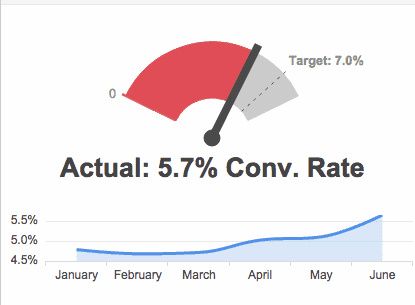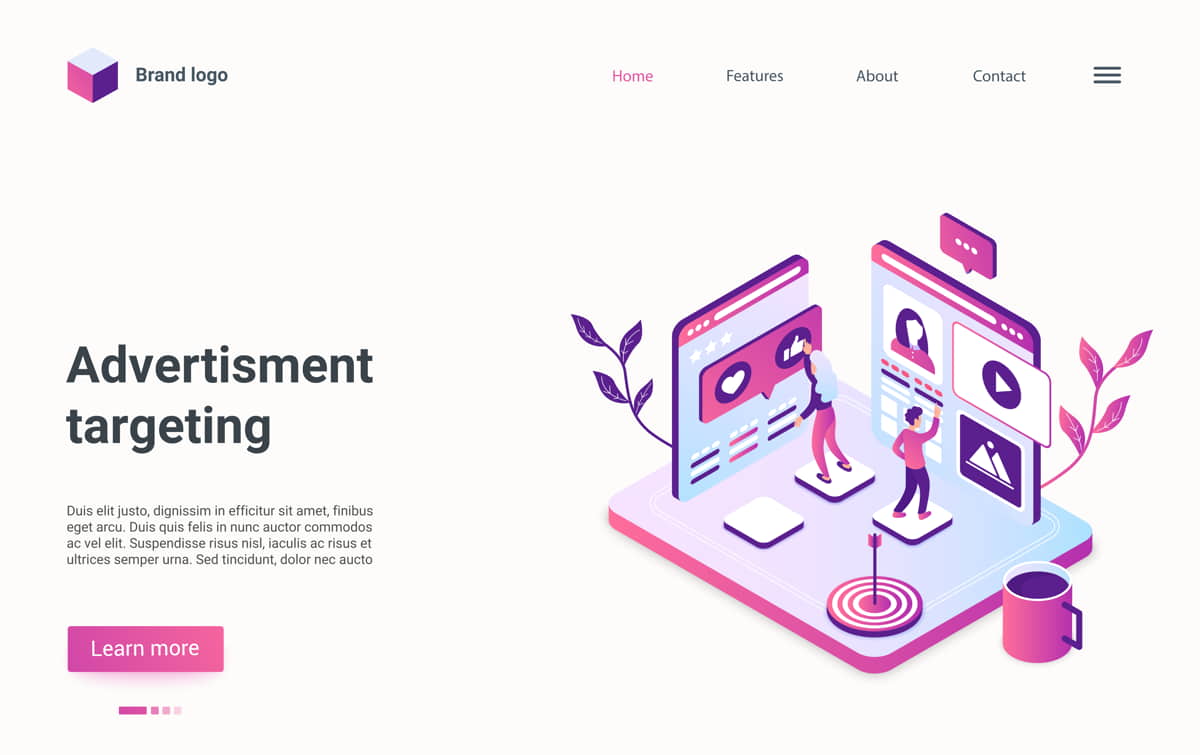Running a business is no child’s play.
Sometimes, being in the moment, you get carried away and lose sight of the big picture – The realities of your business. You forget to keep track of your business metrics and confirm if all is still going as carved out in your professionally written business plan.
While you are busy running your business, you must step back from time to time to evaluate what you are doing in a bid to validate your strategy.
What business metrics are you tracking in your business? Here is a list of key metrics every business should keep track of for growth.
Topics covered in this article:
Turning a small business into a big one is never easy. The statistics are grim. Research suggests that only one-tenth of 1 per cent of companies will ever reach $250 million in annual revenue.
One of the many ways to validate your strategy is to monitor specific business metrics that are essential to the growth of your business.
If you focus on the wrong metrics, you’ll waste time.
Your carefully planned business growth strategies that are often put in place by highly paid business consultants and growth experts will be in futility if you are not monitoring the right metrics.
You can best describe such neglect as ‘vanity metrics’ – metrics that add no real insight into our strategy and growth and may result in a waste of your valuable time and resources in the monitoring of the wrong parameters.
As an entrepreneur, I know how important it is to understand what works on your business and what doesn’t.
Business is unpredictable, and about the only thing that you can count on is that everything continuously changes. You need to measure your business’ performance regularly, so you know what’s successful and what isn’t.
So, how can you understand, manage and measure small business success?
The objective of this post is to highlight some universally relevant metrics that every business, regardless of industry or size, should monitor to stay relevant and profitable.
Contents
1. Lead-to-Client Conversion Rate

Your marketing is yielding results, and leads are pouring into your sales funnel. However, that is utterly meaningless if a good enough percentage of leads are not subsequently converting to customers. Getting customers in your business is the end game, not some fancy metrics on a social media dashboard.
Your lead-to-client conversion rate is, therefore, one metric that you should never overlook. Tracking your customer conversion rates will provide you with the needed insights required to appraise the effectiveness of your campaign touchpoints as well as your entire sales process.
How you can measure your lead to customer conversion rate?
How do you calculate your lead-to-client conversion rate? You can do this by dividing new leads by the number of new customers. I told you it was simple, didn’t I?
Conversion rates are equal to the total number of conversions divided by the number of leads and then multiplied by 100. So if you had 2000 leads, and 300 of them became new customers, your lead conversion rate is 15%.
Not bad at all!
If You Want to Attain success in your Small Business, Know How To Measure It
How you can improve your lead to customer conversion rate?
If the numbers are lower than what you expected (if you are ambitious enough, they should be), options that are open to you would include optimizing your landing pages and call-to-action (CTA) buttons; and evaluating your sales pipeline to identify where drop-offs are occurring, and or training your salespeople to improve the competence of their sales.
There is always something that you can tweak to improve conversions.
Be careful, however, that you do not tweak too many things at the same time and end up confused about what changes led to what results.
2. Customer Lifetime Value
This metric helps to determine how much revenue your business can reasonably expect from the average customer, over an indefinite period as opposed to just driving value from a single purchase.
The longer a business can retain a paying customer, the higher the lifetime value of that customer would be.
One key reason for measuring this metric is to ensure that the amount spent acquiring new leads does not exceed how much you stand to make over a given period from them should they convert into customers.
For example, how would you react when you discover that the Customer Acquisition Cost is ₦18,000 per customer, and an average customer’s lifetime spend in your business is ₦205,000 – happy?
Pause for a moment. Though the direct cost of providing your service is ₦48,000 you’d still need to account for other indirect costs and allocate a fair share per customer. ?
Additionally, knowing this metric can take you closer to identifying the higher value segments in your business, which will allow you to allocate marketing budget appropriately. If you want to improve retention of your high-value customers, then knowing how to calculate Customer Lifetime Value is not optional for your team.
How to measure Customer Lifetime Value
How you calculate your Customer Lifetime Value may depend on the nature of your products or services.
Are you offering a monthly subscription, or do your customers buy standalone large ticket items? Or, are their purchases structured as multiple repeat transactions spread over months?
One way to measure this metric, which I also consider the way to get the most realistic results, considering some of the factors mentioned above, is:
Multiply the average purchase value by the average frequency of repeat orders. Then multiply that by the average lifespan of a customer in your business to determine your Customer Lifetime Value.
If you find this to be confusing, don’t feel bad.
It took me a while to wrap my head around the math involved in this one. One resource that helped me understand calculating Customer Lifetime Value was this HubSpot article. Check it out. It breaks the math to step-by-step, making it much easier to follow.
You can also download an easy to use CLV calculator on the website.
How to improve customer lifetime value
If the numbers do not make sense, two options would be available to you. The first is that you would need to make changes in your customer acquisition strategies to remain profitable.
- Are you paying too much for qualified leads from your lead sources? Find a way to negotiate it down.
- Are you spending too much on ads that are not well targeted at your ideal prospects? Narrow down your targeting.
- Or, maybe your salespeople are not effective at closing sales? Provide them with adequate training on how to close sales opportunities to improve their conversion rates.
- It could also be that you are not selling enough to the same customers. It is established that it is easier to sell to those who have already bought from you before (provided you delivered to their expectations and above) than to sell to new prospects.
- What can you upsell to your existing customers to make them buy more from your business? A more aggressive tactic here is cross-selling. Immediately after a customer has made payments for a product, offer a related product at a one-time discounted amount if they complete the purchase.
But of all the suggestions to improve Customer Lifetime Value, the most effective would be to keep improving customer retention – Do everything possible to turn your customers to your brand ambassador.
As I pointed out earlier, the longer the customer stays with your business, the more chance you have to earn repeatedly from that single customer.
Hence, a key strategy to improve CLV is getting the customer support and customer experience teams to provide an excellent experience as your customers move along their customer journey.
No matter what you do, if customers do not have a pleasant experience doing business with you, there is no way they are sticking around!
Recall, however, that no one size fits all. Learn what works best with your business and execute appropriately and effectively.
3. Customer Acquisition Cost
The simple information this metric seeks is how much it cost you to get a new customer. It is the cost of convincing a lead to try your product for the first time.
The importance of this cost cannot be over-emphasized, as this metric drives the very profitability of any business. If you find that it consistently costs your business more to acquire customers than you can make back from them, then you have a problem.
On the other hand, if a business manages to reduce the amount of money that they spend to acquire new customers while increasing its customer base, that is an indication of profitability.
To put this in context, let’s use the Oil industry example. When oil is discovered in a new field, oil companies calculate what it would cost to extract it from the field, the volume of oil in the field, and how much the oil would be sold based on current market value to determine if the field is economically viable or not.
In a similar vein, knowing the customer acquisition cost of customers allows the business owner to compare that cost with customer lifetime value to determine if the cost makes business sense. In fact, it is not possible to calculate the lifetime cost of a customer without taking into consideration the Customer Acquisition Cost.
How to measure Customer Acquisition Cost
You can measure your Customer Acquisition Cost by dividing all the costs it took you to acquire new customers by the total number of customers acquired in the same period.
As an example, your business spends ₦30,000 as customer acquisition cost and was able to attract 200 clients. That means that the customer acquisition cost is ₦30,000/200 = ₦150.
It is helpful to be holistic, as a lot of businesses make mistakes here and use a figure that is lower than actual, sabotaging the purpose of the whole exercise. Add together your customer acquisition campaign costs.
How you can improve Customer Acquisition Cost
If you depend on digital channels for your lead acquisition (and you should), a good place to start is in conversion rate optimization.
Are there any discernable friction points that are causing drop-offs along the way? How optimized is your website for mobile? Could you consider automating your sales process, so customers do not need to wait for your salespeople to finish a purchase?
Additionally, collect feedback from your customers and use that to improve and add value to your service in such a way that your customers are certain of the value that they are getting from you and want to stay with you.
It is also a great idea that instead of bundling up all your channels together, you separate them before calculating customer acquisition costs. That way you will know what works, or which channel is too expensive to be sustainable.
However, I will concede that it is more practical for online businesses to apply this aspect, as marketing online is fully attributable, and marketers can say with certainty which campaign resulted in what sale.
4. Customer Loyalty and Retention
While measuring your conversion rate is a big deal, the big picture is in measuring your concession or loyal rate.
If you lose sight of this metric, your efforts at building a business may just end up as a case of pouring water into a leaking basket.
You may be acquiring customers and making sales, but if those customers are not sticking around for the long term, and making repeat purchases from your business, the Customer Lifetime Value will be ridiculously low.
How to calculate the customer retention rate
The first thing you need to calculate customer retention rate is to determine what period you are measuring against.
There are three pieces to this puzzle. To calculate customer retention rate, you need:
- Current number of customers (C)
- Number of new customers added within the period measured (N)
- Number of customers you had at the start of the period (S)
Here is the not so simple way of calculating customer retention rate:
Customer Retention Rate = ((C-N)/S) *100
Not so tough, right?
How you can improve customer retention rate
This simple calculation is the golden rule to building a business that is self-sustainable.
When you consider how expensive it is to acquire new customers and get them to the point where they see value in your relationship, you will learn to value them.
For your business to be considered as growing, your customer acquisition rate must be higher than your customer attrition rate (that is, the rate at which customers leave your business).
This means that for every customer that leaves your business, you will need to find a way to replace that customer, while still acquiring new ones.
Interestingly, and as I have said repeatedly, delivering a superior service that is customer-focused is the number one way to improve your Customer Retention Rate.
According to Gartner, 80% of your future revenue will come from 20% of your customers. That’s a huge figure, and if you are serious about growing your business, that research should be a wakeup call.
Obsess about providing superior value. It will save you money in the long run!
Last Words
Talk to any businessowner out there and they will tell you that they want their business to succeed.
Many, though, are at a loss as to what to measure to ensure that they are making progress on that goal, besides the obvious ones like profit and loss.
While there is some subjectivity to the metrics recommended here, I have taken care to ensure that they are as industry neutral as possible. So just about anybody can pick it up and run with it.
I hope that these suggestions give you a good start on how to measure metrics that add value to the performance of your business.


























Wonderful beat ! I would like to apprentice while you amend your website, how can i subscribe
for a blog site? The account helped me a acceptable deal.
I had been a little bit acquainted of this your broadcast provided
bright clear idea games ps4 185413490784 games ps4